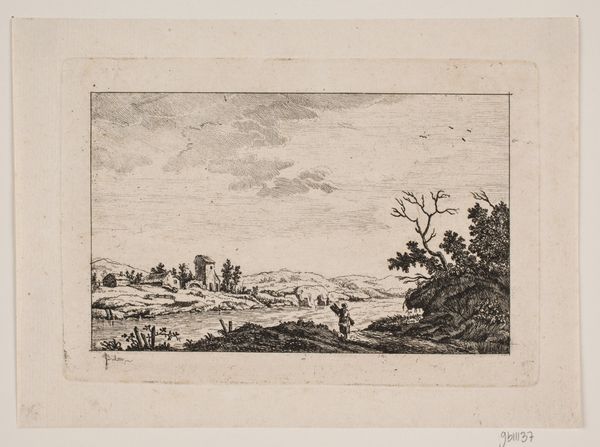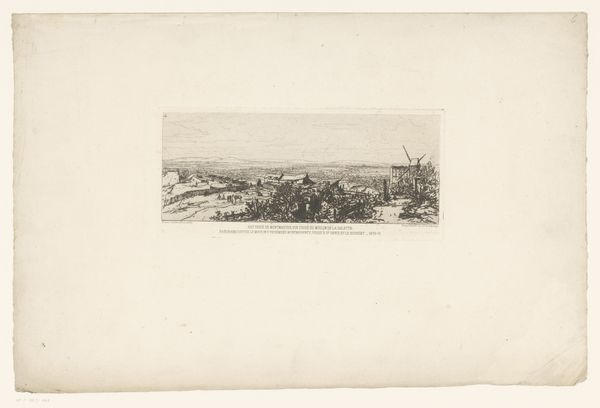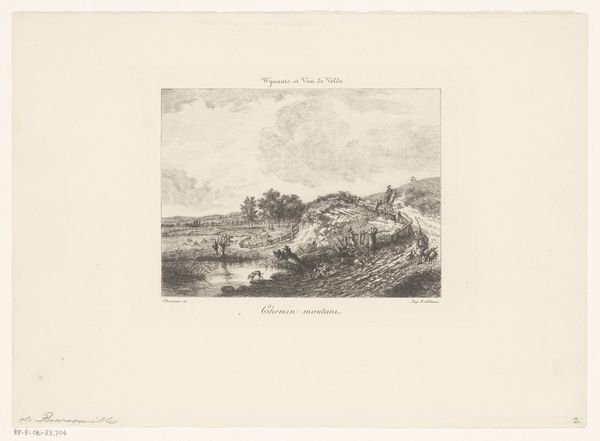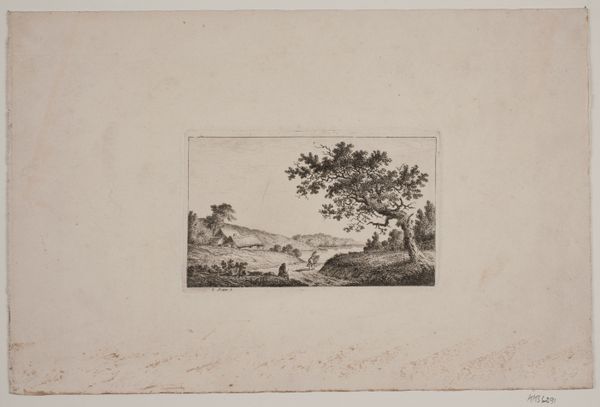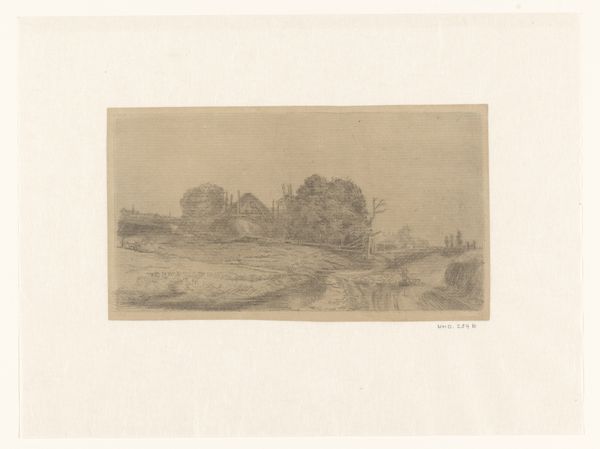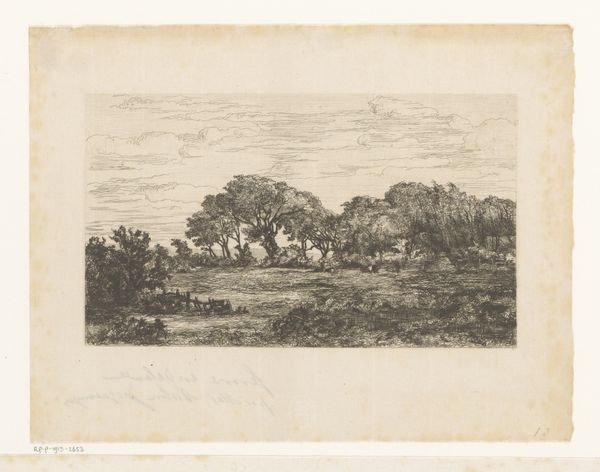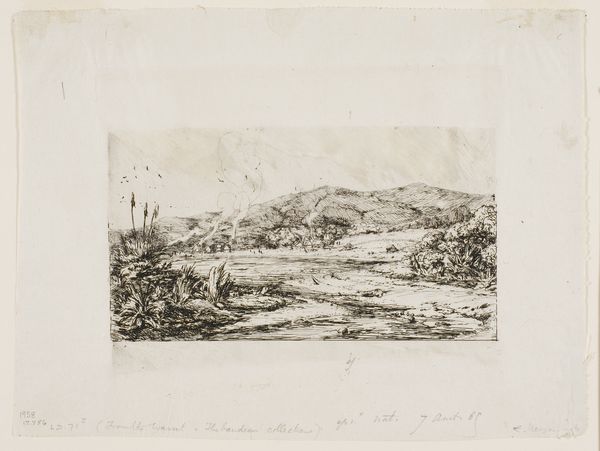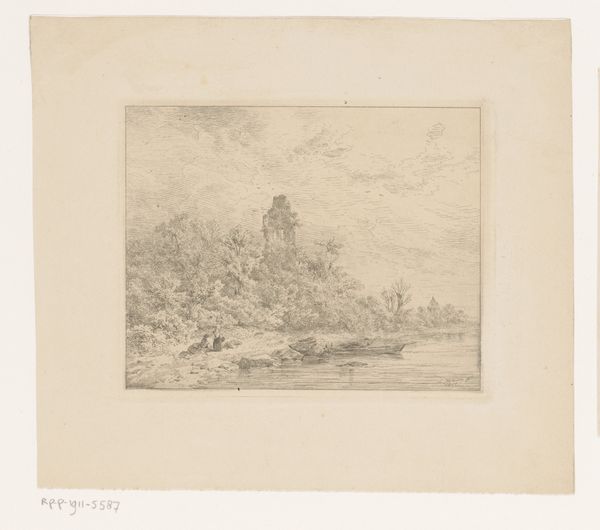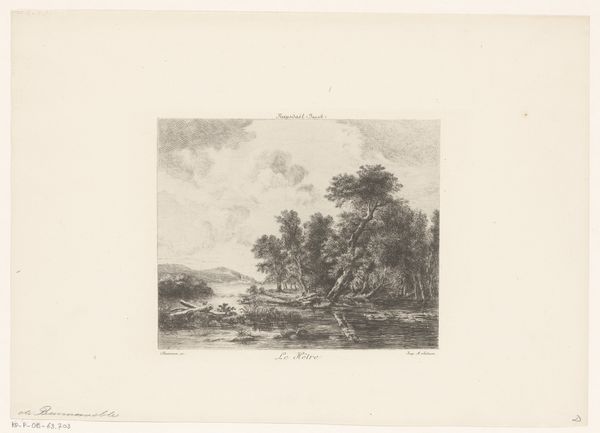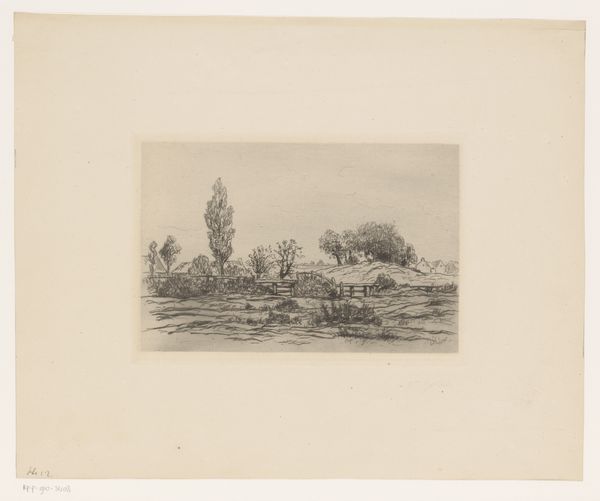
aquatint, print, etching
#
aquatint
# print
#
etching
#
landscape
#
etching
#
romanticism
Dimensions: 105 mm (height) x 145 mm (width) (plademaal)
Curator: We are looking at "Landskab med huse," or "Landscape with Houses," an etching and aquatint created by Eleonore Christine Tscherning sometime between 1800 and 1833. It's held at the SMK, the National Gallery of Denmark. What’s your initial take? Editor: Haunting, almost desolate. The thin lines, the muted tones, create this feeling of quiet abandonment. Like a memory fading into the paper. There's something so raw about it, even romantic in a darkly toned way. Curator: Interesting. Tscherning was working within a very specific artistic and cultural moment. Landscape art during this period, particularly with the rise of Romanticism, was tied to ideas of national identity. Artists were interested in depicting the specific character of the Danish landscape and how the land helped forge collective identities. Editor: So, it's a kind of stage setting for national pride? Is it too cynical to say that artists back then were essentially crafting PR for the monarchy or the rising merchant class? The tiny buildings in the background give that “cozy countryside” vibe – designed for the comfortable elites of Copenhagen more than anyone actually toiling in those fields. Curator: There’s truth in what you’re saying, although there’s nuance to be found. Romanticism wasn’t solely propaganda. The focus on landscape and national identity intersected with complex political issues of the time. After the Napoleonic wars, Denmark faced immense social and economic struggles, making representations of "ideal" or idealized rural life comforting visual emblems of past greatness or hoped for national renewal. These images promoted belonging during instability. Editor: Still, that slightly crooked barn feels strangely revolutionary. Almost like a tiny act of defiance in a field of imposed ideals! For me, it becomes not about Denmark's triumphant story, but an observation, even a premonition of how fleeting comfort and success really are. I guess the magic trick of a piece like this lies in holding multiple stories, in those scratchy, fragile lines. Curator: Exactly. It allows for precisely those kinds of layers of interpretation that connect the piece back to the conditions of its creation, but let it transcend it too. Editor: Beautifully put. Gives you a chill bumps. Curator: Precisely! It exemplifies the complexity of art as a visual historical record.
Comments
No comments
Be the first to comment and join the conversation on the ultimate creative platform.

